Dragon Court and The Order of the Garter, the Elite Societies they control Part 4
This is a continuation from the previous article of this series, it is part 4 of the Sabbatean Elites history research.
From the previous article in this series, a picture of who these Parasitic Elite bloodlines are, begins to emerge. The more that the obscure history of their beginnings can be examined, current behavior of these Elites seem to make sense.
This post will be too long for an email view, please consider reading it in your browser.
Again, I am relaying the research of “Firestarter’s” thread on Ron Paul Forums. In this posting I will introduce the Order of the Garter, and how it may closely tie into the Dragon Bloodline.
This whole arrangement of Hierarchies of Power Families looks more like an onion skin; where all the true members of the Dragon line are at the center, then just outside of that are the Order of the Garter mostly consisting of Royalty. The Order of the Garter appears to have command of the different branches of the Sabbatean and Frankist Cults that are centered within each major religious organization. For the previous articles here are the links to those starting with the first one of this series:
Sabbatean Billionaires and their Philanthropy, what do they want? Sabbatean Billionaires and their Philanthropy, what do they want?
This is part 2:
Sabbatean Frankist Billionaires who are they? Some History could help us see them for who they are.Sabbatean Frankist Billionaires who are they? Some History could help us see them for who they are.
This is part 3:
Dragon Court, a history of Symbolism and the Elite SocietiesDragon Court, a history of Symbolism and the Elite Societies
For other posts in my archive please feel free to take a look:
nefahotep@substack.com
At the Rothschild Waddesdon Manor in France are the following 3 statues of “mermen”. The “mermen” on the right and left sit on creatures that look like dragons.
It looks like it’s easier to find reliable historic information on the dragon bloodline than find out that what the current status is.
I’ve found some books on the historic context of the grail (dragon) families, maybe I can write about these in my next posts.
Holy Blood, Holy Grail
I have found a book that is sort of about the Order of the dragon; Michael Baigent, Richard Leigh and Henry Lincoln – “The Holy Blood and the Holy Grail” (1982): https://cdn.preterhuman.net/texts/co...LY%20GRAIL.pdf
The words dragon and Scythia don’t appear in the “… Holy Grail” book at all, but it contains a lot of information I was already checking out.
I believe that Baigent et al have intentionally written this book as a mix of fact and fiction, in a disinformation ploy (keeping “conspiracy theorists” busy by investigating fairytales). Unfortunately I haven’t found a better book on this topic yet (it doesn’t hold up to the Nicholas de Vere book).[Nicholas de Vere’s book is better]
What’s also interesting is that Dan Brown’s “The Da Vinci code” appears to be inspired by the “… Holy Grail” book.
Jesus, Merovingians, Khazars, Lion of Judah
Arguably the most ridiculous assumption in the “… Holy Grail” book is that the “Merovingian” bloodline descends from Jesus Christ.I’ve found an interesting article on the Merovingians, Carolingian bloodline that debunks this:
This theory was popularized in 1982 by the occultic book “Holy Blood, Holy Grail” in which the author tries to sensationalize his work, purposely misidentified Jesus of Nazareth with His cousin Jesus “of Gamala”; for the author surely would have known better from his research. The author of this miss-identification could make the claim that Jesus of Nazareth married Mary Magdalene and sired children and had descendants who eventually became the ruling houses of medieval and modern Europe, which the author refers to as the “Jesus Dynasty” or “Jesus Bloodline;” however, these are the wife and children of Jesus “of Gamala;” the cousin of Jesus of Nazareth, who by all accounts was celibate.
This article obviously shares my view that the writers of the “… Holy Grail” book have intentionally misrepresented the [following] facts…
During the Crusades, members of Eastern European aristocracy, descended from the remnants of the Khazars, in addition to the ruling families of Armenia, who intermarried with the descendants of the Merovingians. The Merovingians originated from Scythia, where they were known as the Sicambrians.
Another branch of the Turks, the Bulgars, during the seventh century, came under domination of the Khazars. The Khazars forced the Bulgars to move to the upper Volga River region where the state of Volga Bulgaria was founded, while other Bulgars fled to the area that is now called Bulgaria.
The Merovingians eventually intermarried with the family of Charlemagne, and Rabbi Makhir (the father of Guillaume de Gellone). It is from this lineage that all the leading lines of European aristocracy descend.
Priset’s son, Barjik (King of the Khazars), was the father of Irene (Tzitzak). Irene married Constantine V “Copronymus” the Isaurian, a descendant of Antiochus I of Commagene, and became the father of Leo the Khazar, who became Byzantine Emperor in 775.
Leo the Khazar was the father of Charles Constantine, whose daughter was Constance of Arles and Vienna, who married Boso of Provence, the great-grandson of Bernard Plantevelue, who was the grandson of Guillaume de Gellone. Their son was William Taillefer, Count of Toulouse.
William of Gellone’s sister Ida Redburga, married Egbert of Wessex (supposedly a direct descendant of Odin). Egbert returned to England in 802, where he eventually became the first king of England. Their son, Ethelwulf King of the English, was the father of Alfred “the Great” King of England, the father of Edward the Elder King of England.
Ida Redburga was also the grandmother of Thyra Dannebod Queen of Denmark, the wife of the Viking King Gorm “the Old” of Denmark, and the mother of Harald Bluetooth Blataand King of Denmark. Harald’s son, Sweyn I of Denmark, invaded England, and became King of that country, after King Ethelred the Unready in 1013 fled to Normandy.
Hedwige, the sister of Otto the Great, married Hugh the Great, son of Robert I of France and Beatrix of Vermandois, a direct descendant of William of Gellone. Their descendants would form the dynasty of Capetians, from whom all kings of France until the Second Republic established in 1848 would descend.
For some time I’ve been looking for the reason for all of the lions in coat of arms of the elite.
The device on the shield of Guillaume de Gellone (William of Gellone, William of Orange) was the Lion of Judah: http://web.archive.org/web/20190319235507/http://www.conspiracyschool.com/carolingian-empire
Rennes-le-Chateau
The “… Holy Grail” book sort of starts in the tiny French village Rennes-le-Chateau, which in the wake of the Da Vinci code media hysteria was literally flooded with tourists (some 100,000 tourists a year). [Real purpose of the book]
According to Baigent, the cure Berenger Sauniere, possibly found some secret information “treasure”, which made him wealthy (he spent huge amounts on the restoration of the village church and on collections…). This isn’t any great mystery, as Archduke Johann von Habsburg paid a substantial sum to Sauniere. But it isn’t known why Von Habsburg (and others?) paid large sums to this simple cure…
What is interesting about this lowly priest is that he was well connected, to artists like: Emma Calve, Stephane Mallarme, Maurice Maeterlinck, and Claude Debussy. The famous composer Debussy is interesting, because he is one of the reported Grand Masters of the “Priory of Sion”, which appears to be the most important topic in the Baigent book.
Near Rennes-le-Chateau are the ruins of the chateau of Blanchefort, ancestral home of Bertrand de Blanchefort, fourth Grand Master of the Knights Templar in the mid-twelfth century. Rennes-le-Chateau was on the ancient pilgrim route, from Northern Europe to Santiago de Compastela in Spain.
Sauniere was dismissed by the local Bishop, reportedly over spending so much money. He appealed to the Vatican, which exonerated and reinstated him. Then from 17-22 January 1917, Sauniere suddenly died of a stroke.
With the restoration of the village church of Saint Mary Magdalene, dating from the seventh or eighth century, Sauniere introduced some not very Christian ornaments…
See for example the Devil supporting the Holy Water Stoup.See the Skull and Crossbones above the entrance to the churchyard.
There are also some symbols like the following in the church, which represents the “Serpent Rouge” (Red Snake).
The Serpent Rouge is a poem of 13 verses: http://donbarone.selfip.net/Le_Serpent_Rouge.htm
On 17 January 1967, it was deposited into the French National Library. It was part of the Secret Dossier. The title page of the Serpent Rouge lists 3 authors - Pierre Feugere, Louis Saint-Maxent and Gaston de Koker. On 6/7 March 1967 all 3 were found hanged.
The Secret Dossier also contains a genealogy of Merovingian kings and 2 ancient maps of France.
Cathars - crusades
While the Khazars are missing; the “… Holy Grail” book has interesting information on the Cathars. Cathar “heretics” were reputed to possess something of fabulous and even sacred value which, according to a number of legends, was the Holy Grail. There is even a Cathar church and a “Cathar pope” who, until his death in 1978, lived in the village of Arques.
The history of the region is soaked in Cathar blood.
On 14 January 1208, one of the Papal Legates to the Languedoc, Pierre de Castelnau, was murdered. The crime was committed by anticlerical rebels, but was blamed by Rome on the Cathars. At once Pope Innocent III ordered a Crusade.
The Cathars had been persecuted in the previous century, but now the Church really mobilized her forces. This war, which lasted for nearly 40 years, is now known as the Albigensian Crusade.
The invading army swept through Beziers, the whole of the Languedoc, Perpignan, Narbonne, Carcassonne, and Toulouse. The victors left a trail of blood, death and carnage in their wake.
The previous from the “[I]… Holy Grail[/I]” book on the crusades against the Cathars, sounds similar to what I’ve read in the Nicholas de Vere book – but he called them Dragon, Grail Families. I have found a good article from which the following information comes.
In the 11th and the 12th century, there were some sects, called by a variety of names, including - Manichaeans, Bulgars, Publicans, and Weavers. They called themselves Cathars.
In the second half of the 12th century, Cathars became strong in southern France, where they were patronized by the ruling counts and barons. The Popes undertook action to destroy the “heretics.”
Pope Innocent III (1198-1216) eagerly took on the conversion of the Cathars. In 1198, he sent his legates to southern France with unlimited powers.
During the Crusade at the beginning of the 13th century in the southern of France, the Cathars were insultingly called Albingenses after a demented Albi.
In 1229, the Council of Toulouse established rules on tracking down and punishing the Cathars. In 1232, Pope Gregory IX established the Inquisition Court at the Dominican Order to punish the Cathars. In 1259, Pope Innocent IV authorised torture at the Inquisition Court
For twenty years the Crusaders desolated southern France, and cleared it of Cathars.
Cathars viewed the Pope as an Antichrist.
The Cathars distinguished between ordinary believers (Credentes) and a small inner circle of leaders initiated in secret knowledge, then known as boni homines, Bonneshommes or “Goodmen”, now generally referred to as the Elect or Parfaits.
This kind of thinking of the inner elite with “divine knowledge” is very similar to what’s described in the Nicholas de Vere book.[Note: what may have been written about these people could also have been a deliberate misrepresentation, history is always written to discredit the loser of the conflict.]
The Bulgars or Scythians originated from what is now called Turkey.
The Bulgars, Goths, Alans, the Huns, and all people of the Hunnic circle came from the Great Bulgaria in the N. Pontic. During the 2nd millennium they resettled across Europe, and occupied aristocratic positions.
Around 1012, the first Cathars in Europe were noted in the Limousin: http://s155239215.onlinehome.us/turk.../CatharsEn.htm
Khazars – Scythia
When reading the Nicolas de Vere book, I saw similarities between what he called “dragon” or “grail” families and “Khazars”. There are also similarities between the Khazars and Cathars.
From what I’ve read, between 900 and 1000, the Khazars “disappeared” to re-emerge in Europe as other "tribes", like Ashkenazi Jews and Cathars. Probably the Khazars also immigrated to other parts of the globe, like the Middle East from where they originated.
There were "Black Khazars" and "White Khazars". The "Black" or "Kara" Khazars constituted the lower caste, while the "White" or "Ak" Khazars were the noble or royal classes. This distinction between the “white” upper-class and “black” lower class, is still used in Turkey these days.
The Khazars subjugated the surrounding tribes, that sort of swallowed them up. The most difficulty they had was with the Bulgars, who were "crushingly defeated" around 641. Many Bulgars migrated west to what is now called Bulgaria.
The Khazars, at one time in the second half of the eighth century occupied an immense land, Khazaria, of over a million square miles from western Hungary/Austria eastward to the Aural Sea, north to the Upper Volga, and in the south to the Caucasus Mountains between the Black and Caspian seas.[This is part of what is now called Ukraine, important reference due to the current “War” all western “Democracies” are waging against Russia.]
Scythia was a part of the Kingdom of the Khazars.
In 627, Roman Emperor Heraclius formed a military alliance with the Khazars to defeat the Persians.
Arabs in attempts to invade Europe were held back by the Khazars, in a war that lasted over a century.
After the final defeat of Islam's army in 730, a marriage between a Khazar princess and the heir to the Byzantine Roman Empire resulted in a son who ruled Byzantium as Leo the Khazar.
According to Arthur Koestler around the year 740, King Bulan of Khazaria “converted” to Judaism for political reasons. According to Koestler, these days more than 90% of the people that call themselves “Jew”, are Ashkenazis, who descend from the Khazars.
According to Hugo Freiherr, the Talmud explains that Ashkenaz is a country near the Black Sea between Ararat and the Caucasus (this was the region of the Khazar empire).
Yiddish is an amalgamation of several tongues, primarily Hebrew, and written with Hebrew characters, but with much mediaeval German and components of other languages like Slavonic. The German elements into Yiddish originate from the east of Germany: http://www.apfn.org/thewinds/library/khazars.html
The Khazarian kingdom was dissolved, after being attacked by the Vikings in their dragon-headed ships.Knights Templar
According to Guillaume de Tyre, writing a half century later, the Templars were established in 1118.
In 1128, Saint Bernard, abbot of Clairvaux and the chief spokesman for Christendom, declares the Templars to be the epitome and apotheosis of Christian values.
In 1146, the Templars adopted the red cross on their white costume, which looked like this.
The Templars were sworn to poverty, chastity and obedience. On admission to the Order, a man had to sign over all his possessions. The Temple also received abundant gifts.
The Order itself amassed huge amounts of wealth, including estates in France, England, Scotland, Flanders, Spain, Portugal, Italy, Austria, Germany, Hungary, and in the Middle East.
This sounds like a great strategy to keep the members of an order in complete obedience.
The Temple maintained a warm relation with the Cathars, especially in the Languedoc region. Many wealthy landowners, Cathars or sympathetic to the Cathars had donated land to the Order.
Around the time of the Albigensian Crusade many Cathars entered the Temple’s ranks. A high proportion of the Order’s high-ranking dignitaries were from Cathar families. In the Languedoc Temple officials were more often Cathar than Catholic.
Bertrand de Blanchefort, fourth Grand Master of the Order, was a Cathar.The establishment of Banking
The Templars in effect established banking. By lending vast sums to destitute monarchs they became the bankers for every throne in Europe and for certain Muslim potentates as well.
With their network throughout Europe and the Middle East, they also organized the safe transfer of money for merchant traders, at an interest. [Usury] Money deposited in one city, could be withdrawn in another, by means of promissory notes inscribed in intricate codes.
The Templars worshipped Baphomet (the Devil). They have been accused of amongst others: denying Christ, trampling and spitting on the cross; gay sex; and the ritual sacrifice of children.
[Note: Baphomet is an ancient Celtic symbolic representation of the tree of life; it has been horribly misunderstood. I plan on writing an article in the future to explain this; many ancient symbols got hijacked by later cults and groups, who misused and misrepresented them, resulting in later being condemned.]In 1312, the pope officially dissolved the Knights Templar. Some of them received the death penalty. Nevertheless, the Order did not cease to exist. Many German Templars entered the Hospitallers of Saint John and the Teutonic Order. In Spain, the Templars found a refuge in other orders. In Portugal, the Order simply renamed itself the Knights of Christ. [Knights of Columbus?]
Freemasons of the period, called the Templars their own antecedents. These days some Masonic lodges have adopted the grade of “Templar”, as well as rituals from the original Order.
Priory of Sion
The Knights Templar is “real” historic information. I’m not sure about the “Priory of Sion” (Prieure de Sion)…
Baigent writes that the Knights Templar were founded by the secret society the Order of Sion, as guardians of the Grail and the Grail family, or the Merovingian bloodline.
Although the Knights Templar was “dissolved” between 1307 and 1314, the Priory of Sion remained unscathed. This contradicts other comments in the “... Holy grail” book, that the Templars simply joined other secret orders, when the Temple was dissolved...
Only in 1962, the Priory of Sion first appeared in writing, in a work by Gerard de Sede.
Until 1188, the Ordre de Sion and the Order of the Temple shared the same Grand Master. In 1188 the Ordre de Sion was renamed to the present Prieure de Sion (and had a different Grand Master since).
The most interesting in the “... Holy grail” book about the Priory of Sion are its successive Grand Masters (Nautonniers), coming from the “Dossiers secrets”:Jean de Gisors 1188-1220;Marie de Saint-Clair 1220-66; Guillaume de Gisors 1266-1307;
Edouard de Bar 1307-36; Jeanne de Bar 1336-51; Jean de Saint-Clair 1351-66; Blanche d’Evreux 1366-98;
Nicolas Flamel 1398-1418; Rene d’Anjou 1418-80; Iolande de Bar 1480-83; Sandro Filipepi 1483-1510;
Leonard de Vinci 1510-19; Connetable de Bourbon 1519-27; Ferdinand de Gonzague 1527-75; Louis de Nevers 1575-95;
Robert Fludd 1595-1637; J. Valentin Andrea 1637-54; Robert Boyle 1654-91;
Isaac Newton 1691-1727; Charles Radclyffe 1727-46; Charles de Lorraine 1746-80; Maximilian de Lorraine 1780-1801;
Charles Nodier 1801-44; Victor Hugo 1844-85; Claude Debussy 1885-1918;
Jean Cocteau 1918I’ve highlighted the most familiar names to me.
Charles Radclyffe was, from his mother’s side, a grandson of the next-to last Stuart monarch. He was a cousin of Bonnie Prince Charlie and George Lee, Earl of Lichfield (another illegitimate grandson of Charles II).
Francois’s brother, Charles de Lorraine, was the first European prince to publicise his Masonic affiliations. He was initiated in 1731 at the Hague.
There has been a Priory of Sion in the 20th century, but I don’t believe that this secret society was already established in the 12th century.
The list of names of Grand Masters doesn’t seem true, as some of them became Grand Master at a young age, in their early twenties.
It's also strange that according to the "... Holy Grail" book, when the Knights Templar was dissolved the members joined other societies, but not the Priory of Sion...
Even if the Priory of Sion really is an ancient secret society, I don’t think it’s that important. I’m looking for - THE secret society behind all of the (hundreds or thousands) of secret societies. When I look at its list of Grand Masters, these are not the absolute elite.
I’ve found an interesting article of somebody who tries to debunk the Priory of Sion…
The Priory of Sion is supposedly an ancient society that grew out of L’Ordre de Sion (The Order of Sion), as founded in 1090 by Godefroy de Bouillon.
The official emblem of the Priory of Sion is partly based on the fleur-de-lis.
The Priory of Sion was the invention of Pierre Plantard, an ambitious Frenchman who cobbled the story together in 1956. Plantard claimed to be the Grand Master of the Priory of Sion, before recanting it all under oath. It’s hard to believe that Plantard would become its Grand Master, as compared to the impressive list of (other) Grand Masters.
Probably the Priory of Sion, is a 20th century creation which has artificially created documents to manipulate its history. Its symbolism is not ancient, but was copied from the Saint Sulpice church in Paris, France.
The date 17 January is supposedly an important date. Saint Sulpice, a seventh-century bishop of Bourges, France, died on 17 January 646. The son of the Merovinginian King Dagobert II, Sigisbert VI, visited Rennes-le-Château on 17 January 681; and the lost body of Dagobert II was supposedly rediscovered on 17 January 872. Bérenger Saunière is said to have been struck down on 17 January 1917 before dying five days later.
The Capricorn passage from Le Serpent Rouge states: “I haven’t told you in fact that this was a dream that I’d had this 17 JANUARY, feast day of Saint SULPICE”.
Plantard, de Sède, and Lincoln (one of the writers of the “… Holy Grail” book), are all suspicious and work together. The culprit who manipulated the symbolism in Saint Sulpice must have been Philippe de Chérisey: http://andrewgough.co.uk/articles_sulpice/
The following stained glass from the Saint Sulpice church (SS) could either stand for the 2 patron saints of the church, Saint Peter and Saint Sulpice, or for the Prieure de Sion.
Leonardo Da Vinci - Bloodsucker
One of the most famous of the reported Grand Masters of the Prieure de Sion is Leonardo da Vinci, who drank human blood for medical purposes.
Noble quoted Leonardo da Vinci on the matter:We preserve our life with the death of others. In a dead thing insensate life remains which, when it is reunited with the stomachs of the living, regains sensitive and intellectual life.
It is ironic that we have been told in history falsification about cannibalism of barbaric savages.
In “civilized” European countries they, including the British elite, drank human blood, ate human flesh, made ointments from human fat, and manufactured drugs from powdered human skulls. Nearly every part of the human body was used for medical treatment: hair, brain, heart, skin, liver, urine, menstrual blood, placenta, earwax, saliva, and feces.
Paracelsus wrote about the curative benefits of drinking warm human blood and advocated harvesting the corpses of executed criminals for medical purposes.
In 1483, King Louis XI struggled for life, and drank the blood of small children to get better.
In 1492, while Pope Innocent VIII lay semi-comatose on his death bed after an apoplectic stroke, his doctor bled three young Shepard boys for the pope to drink.
Dr. Jonathan Goddard, a distinguished Fellow of the Royal College of Physicians, developed a “miracle remedy” in the 1660s made from usnea and powdered skull fragments. He sold it for £6000 to King Charles II.
In 1743, the British physician Robert James noted the virtues of human fat as a painkiller, emollient, anti-paralytic, and against gout and contracted nerves. Also in the 1740s, John Keogh, a respected community physician, recommended pulverized human heart for dizziness, warm blood to alleviate sickness, and powdered mummy for the treatment of gangrenous wounds.
Charles II and Mary II weren’t the only cannibals among British aristocracy. Queen Elizabeth I treated her smallpox scars with an unguent made from human fat: http://www.cvltnation.com/mors-medic...vilized-world/
Protocols of the elders of Sion
According to the “… Holy Grail” book, it was Sergei Nilus, who around 1903 Nilus presented the Protocols of the elders of Sion to the czar. Before doing so, he had doctored it, making it far more venomous and inflammatory than it initially was. Nilus then published a translation of the Protocols.
A copy of the Protocols was already in circulation in 1884.
According to the state media the Protocols of the elders of Sion is an anti-Semitic forgery. The explanation of Baigent and co is bizarre, a real document that was tampered with by Nilus.
My most important reasons to believe that the “Protocols…” are genuine, is that they explain what has been going on since the French revolution, at the end of the 18th century.
Furthermore it is not easy to write something like this . It’s sort of a despotic translation of Machiavelli.
Here is the Protocols of the elders of Sion: http://xroads.virginia.edu/~ma01/Kid.../protocols.pdf
It’s ironic that there are lots of tales of “knights” who have fought against the Islam.
The irony is that a lot of these knights, were apparently [trying to] worship the Devil and insulting Jesus Christ in their rituals…
Order of the Garter
Why is it so hard to find good information on the Order of the Dragon?
I found out that Bram Stoker’s Count Dracula is based on Vlad the Impaler, and that the British Royal family are direct descendants of Vlad. Vlad the Impaler was a member of the Order of the Dragon.
Then I have searched for information, and by far the “best” source for information I found on this topic is the Nicholas de Vere book. De Vere’s book is flawed, mainly because he was subjective.
One of the reasons I think this topic is very important is that I couldn’t find better information...
This post is about the Order of the Garter, an ancient society that these days is chaired by Queen Elizabeth II. See Queen Elizabeth in Garter Robes.
According to Nicholas de Vere...
The Order of the Garter was founded by Edward III. Then in 1397 (other sources say 1408), the Dragon Court was reinstated by King Sigismund of Luxembourg, both orders used the ourobourus as their emblem. The ourobourus, the reptilian symbol of completeness is the Sumaire, the serpent that encircles and spirals to create an inhaling vortex.
See the engraving by Lucas Jennis of an ourobourus.
See the Order of the Dragon symbol from the 15th century Jankovich Saddle, on display in Budapest, Hungary.
The Most Noble Order of the Garter was founded by Edward III around 1348, according to the “independent” Wikipedia admission into which is currently ranked as the third most prestigious honour in the UK (inferior only to the Victoria Cross and George Cross).
Since the Order of the Garter is the UK's senior order, a member will wear its star above that of other orders. It is worn on the left breast. See the eight-pointed silver badge star, introduced by Charles I, in its centre is the cross of St George, surrounded by the blue Garter.
See Prince William, son of Crown Prince Charles with his blue Garter Riband and Star,
Henry V was King of England from 1413 until his death in 1422. In 1416, Sigismund, then King of Hungary and later Holy Roman Emperor, visited Henry to keep the peace between England and Hungary. Henry enrolled him in the Order of the Garter, and Sigismund inducted Henry into the Order of the Dragon.
Membership of the Order of the Garter is limited to the Sovereign, the Prince of Wales and a maximum of 24 companion members, and supernumerary members. The monarch - Sovereign of the Garter - grants membership, and the Prince of Wales is known as a Royal Knight Companion of the Garter.
Traditionally the European monarchs join the Order, but the Belgian Royal family is not so high in the hierarchy. Both Prince Albert II, and his successor King Philippe have never been admitted. For a time, both Princess Juliana and Princess Beatrix of the Netherlands were concurrent members of the Order of the Garter as Stranger Ladies of the Garter.
The Sovereign may "degrade" members who have committed serious crimes, like treason.As King Arthur's Dragon Court originally consisted of 24 knights, there are currently 24 families representing the Rex Deus group and Dragon Court. These are supposedly descendants of Israel's 24 (priestly) Levite families.
The Dragon Court exists to protect the descendants of the Vere family, out of which eventually the Antichrist will come.
The Druidic Council of Elders is represented by the Dragon Court, which consists of 26 members (26 = 2*13) of royalty from Eurasian countries in the European Council of Princes. These 26 are 24 elders plus the Antichrist and False Prophet.At the founding of the Order of the Garter, 26 "poor knights" were appointed to the Order and its chapel. This number was not always maintained. After the knights objected to the term "poor", in the 19th century King William IV renamed them as Military Knights of Windsor.
The Chapel of the Order is St. George's Chapel, Windsor, located in the Lower Ward of Windsor Castle, founded in 1475:https://en.wikipedia.org/wiki/Order_of_the_Garter
See the coat of arms of Queen Elizabeth I (1558-1603) with the red and gold dragon on the right, 2 crowned lions. Notice the “blue belt” wrapped around the centre; the symbol for the Order of the Garter.
In the next part of this series, I will continue with the Dragon Court and how it relates to the Scythians and other less known groups who have contributed to the Cult and its psychology.

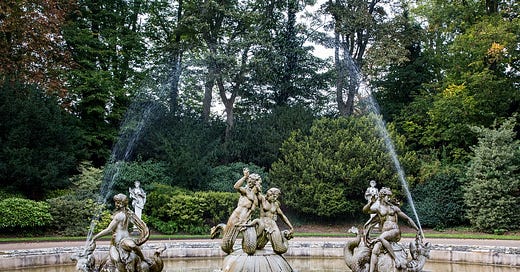



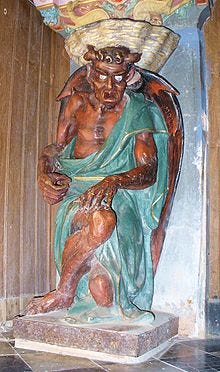
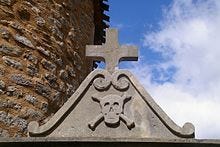

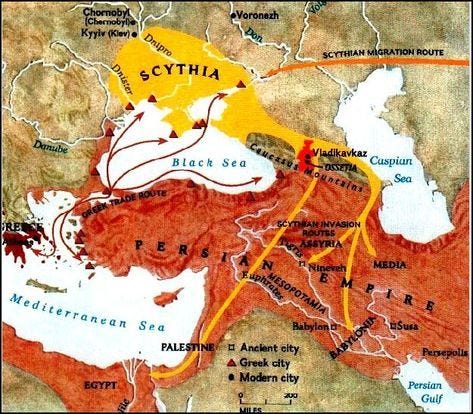

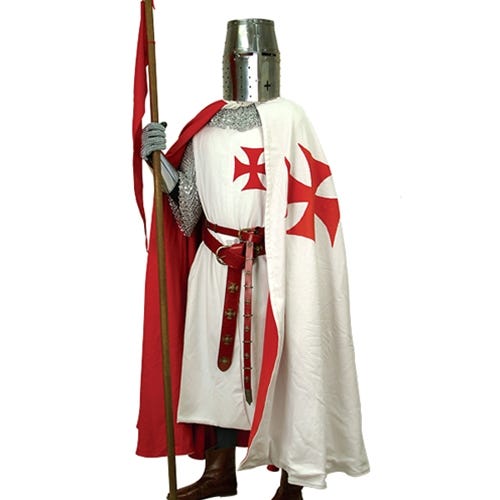
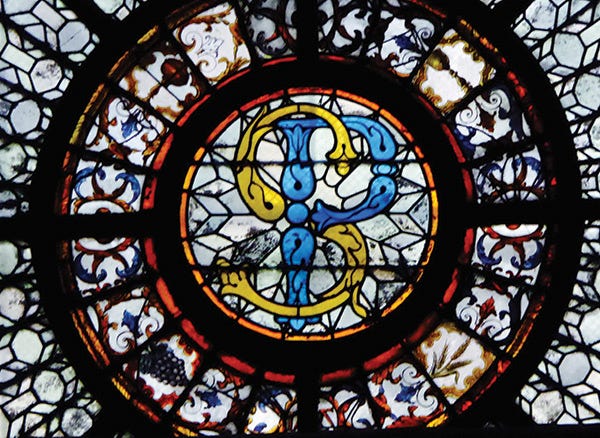
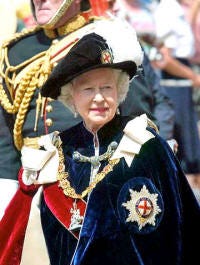

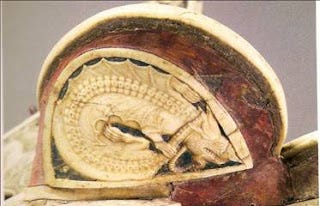
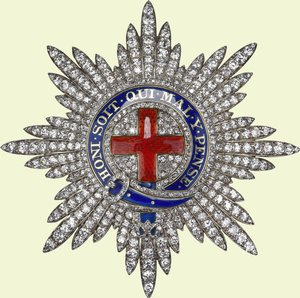

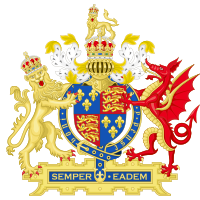
I have been a fan of Cliff high for many years… I agree with everything he proposes… Nobody knows for sure, but he certainly has put a lot of brain power, and time into these things with his intellectual friends
Amazing information! Thank-you for your time & research into this fascinating subject!